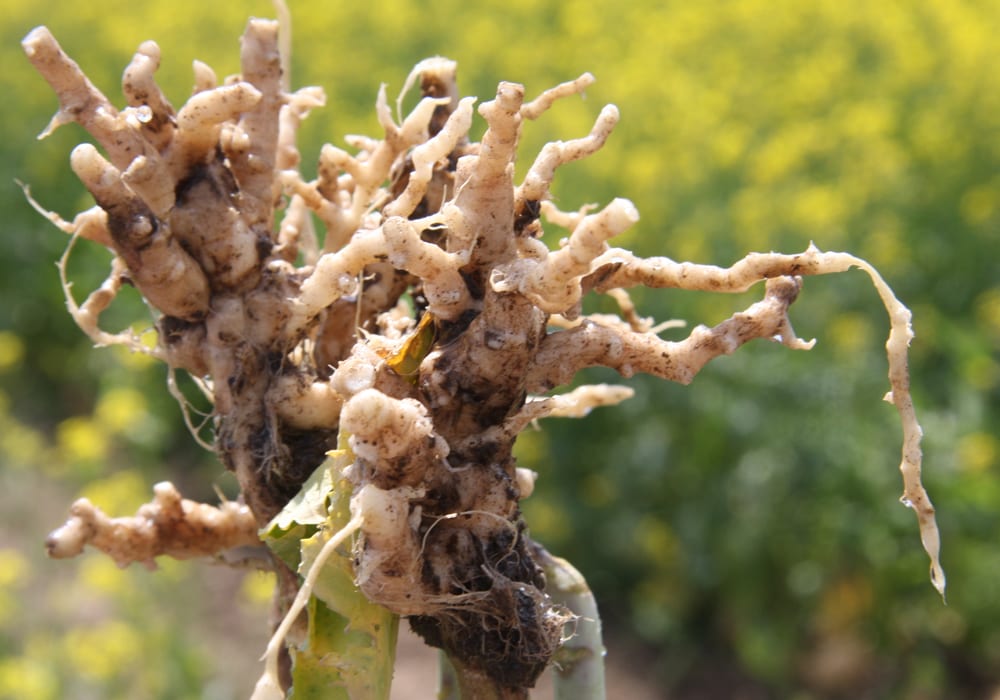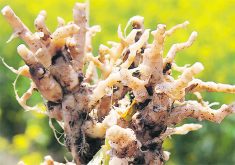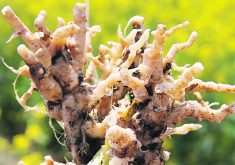CALGARY — Agronomists thought fields infected with clubroot would take years to get back into safe canola-growing shape.
Now they think an infected canola field can probably return to canola production after a two-year break.
And a standard three-year rotation (canola-other crop-other crop) should be able to keep clubroot contained even if it’s present.
“If you can catch it early enough and you can take it out of production for two years … I think they’ll be able to get those spore loads down to manageable levels,” Dan Orchard, a Canola Council of Canada agronomist, said in an interview during the Farm Forum Event in Calgary.
Read Also

Farming Smarter receives financial boost from Alberta government for potato research
Farming Smarter near Lethbridge got a boost to its research equipment, thanks to the Alberta government’s increase in funding for research associations.
Orchard said agronomists and researchers had believed until recently that significantly infected fields would take many years to clean up, even as long as 15 years.
That was based upon spore-load counts that showed millions or hundreds of thousands of spores per gram of soil found in infected fields.
However, new methods have allowed researchers to separate non-viable from viable spores and have revealed that after a two-year gap that “95 percent plus of the spores are not viable anymore in the soil.”
For the most severely infected fields in the Edmonton area, 95 to 99 percent spore death might not be enough to allow safe growing of canola, Orchard said.
But for almost all other areas, that rate of spore degradation could be enough to allow canola crops to grow with few problems. A three-year rotation should suppress clubroot spores.
Combined with resistant varieties and good machinery hygiene, there is reason to hope that ongoing clubroot control is possible, Orchard said.
Because of this, farmers should do what they can to spot clubroot early and take steps immediately.
“Clubroot can be easily managed if it’s found early. It’s really important to find it early,” said Orchard.
Rural municipalities do not normally look for clubroot until a neighbouring municipality reports cases. Farmers are often no different.
“Look for clubroot before a neighbour has it,” he said.
Cautious farmers might think that a four-year or five-year rotation might be even more effective at eradicating clubroot spores than a three-year rotation.
However, that might not be the case. After a steep drop in spore viability after two years, the remaining viable spores tend to remain viable for many years with only a gradual decrease.


















